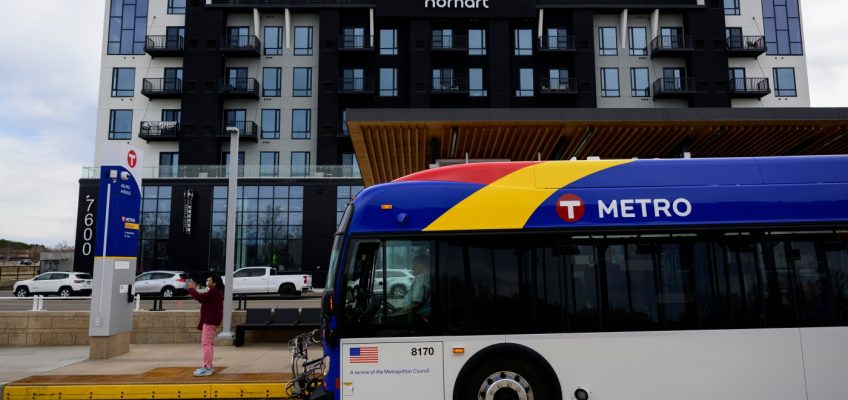The East Metro transit establishment is (finally) getting it right.
By pivoting to a more practical Bus Rapid Transit service model it is signaling that the concept of a Riverview Transit Corridor lives on, and by announcing plans to acquire additional off-street right-of-way it is hinting that there may yet be a role for rail-based transit in the corridor. But to ensure that both long- and short-run narratives play out, policymakers must act now, not 2032, to both jump-start short-run, bus-based, corridor mobility and then to secure sufficient throughput capacity to realize Riverview’s ultimate economic, logistical and recreational potential.
Metro Transit can start by implementing a “Highest Frequency” arterial Bus Rapid Transit (HF-BRT) service over a rebuilt West Seventh that improves current 12- to 15-minute express bus frequencies to five to six minutes and then extends the service north to Maplewood over the Purple Line BRT route. This will move Riverview and Purple Line riders to, from and through downtown more efficiently by reducing annoying curbside wait times and eliminating downtown transfers; it will move Gold Line and other transferring riders through downtown faster via shorter platform waits, and it will afford all riders unprecedented service reliability and broken trip recoverability.
There is nothing new or radical about five-minute bus service over extended city arterials. It is being done today in the suburbs of Toronto, where key components of the Brampton “ZUM” network operate at five-minute rush hour and 10-minute midday frequencies over arterials connecting suburban activity centers to Toronto’s rail transit network. Several of these 10-mile routes now handle over 20,000 weekday riders thanks to multiple double-digit year-over-year increases. Not surprisingly, the operator is planning to upgrade key parts of that network to either full, dedicated guideway, BRT status or as extensions to Toronto’s light rail network.
As such, it is a blueprint for what can happen here.
Five-minute service, however, is just the start.
City and Ramsey County authorities must also secure sufficient off-street right-of-way to cover longer-run, corridor-wide, traffic growth and usage contingencies. Acquiring the 4.5-mile CP Spur, an abandoned railroad pathway connecting the 100-acre mixed-use Highland Bridge development with the Randolph Avenue/West Seventh commercial district, makes that happen.
Through a bit of geographic luck, the spur comes sufficiently close to West Seventh at key transfer points to make it a viable trail and busway supplement to West Seventh itself. It will be just a short walk, for example, from the spur to Sibley Plaza, Lexington Parkway and Randolph Avenue station sites on West Seventh, as well as to the Mississippi River recreational corridor at Otto and Shepard Road.
Beyond these alignment attributes, the spur can safely support transit operations 10- to 15-mph faster than over a congested West Seventh, making it the only realistic right-of-way option for an eventual regional light rail presence in the corridor, should social and economic conditions warrant.
And, finally, the spur in transit deployment can accelerate conversion of 125 acres of industrial real estate along scenic Shepard Road to transit-oriented residential and commercial usage near potential Randolph (does St. Paul really want a garbage truck fueling station there?) and Homer Avenue station sites based on similarly successful Green and Blue Line station area conversions near the University of Minnesota and 46th Street, respectively.
The West End has waited for more than a decade for equitable transit service on its well-patronized Riverview Corridor as proponents tried without success to sell the public on a slow, rail-based, street-running alternative. Met Council can mitigate that by deploying best-in-class five-minute bus service now, while Ramsey County can nail the happy ending to the Riverview mobility saga by securing for the common good the right of way for what someday could be a faster, safer and far more effective version of … the Modern Streetcar.
Jerome Johnson is a retired transportation economist and cofounder of Citizen Advocates for Regional Transit (CART), a St. Paul based mobility advocacy organization.


Leave a Reply